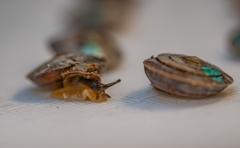A recently identified deepwater fish species has been named Branchiostegus sanae, drawing inspiration from the warrior princess San of Studio Ghibli's iconic film, Princess Mononoke. Researchers from several Chinese scientific institutions discovered this new species, with its notable cheek striped markings resembling the character's distinctive face paint.
San, who was raised by wolves, serves as the central figure in Hayao Miyazaki’s 1997 masterpiece. The film gained immense popularity in Japan, amassing over 19 billion yen (£100.4m) in box office revenue. The area of focus for this discovery lies in the deepwater tilefish family, Branchiostegidae, known for species that inhabit significant ocean depths, with some located up to 600 meters beneath the surface.
The study, which involved a collaborative effort between the South China Sea Institute of Oceanology, the Chinese Academy of Science, Zhejiang University, and Ocean University of China, utilized genetic analyses to confirm the fish as a separate species. The choice of "sanae" in the species name reflects the connection to the character's themes of nature protection and guardianship.
Lead researcher Haochen Huang emphasized the parallels between San's fight for nature and the fish's environment, stating, “In Princess Mononoke, San is a young woman raised by wolves after being abandoned by her human parents. She sees herself as a part of the forest and fights to protect it." The film addresses humanity's relationship with nature, an ideal the researchers hope to promote through this naming.
Despite the prevalence of deepwater tilefish in east and southeast Asian seafood markets, species diversity in the Branchiostegidae family remains low, with only 31 species described. The identification of Branchiostegus sanae marks a significant contribution to the understanding of this group, which has seen only three new species named in the last 34 years. The specimens have been preserved in marine biological collections for further study by scientists.





